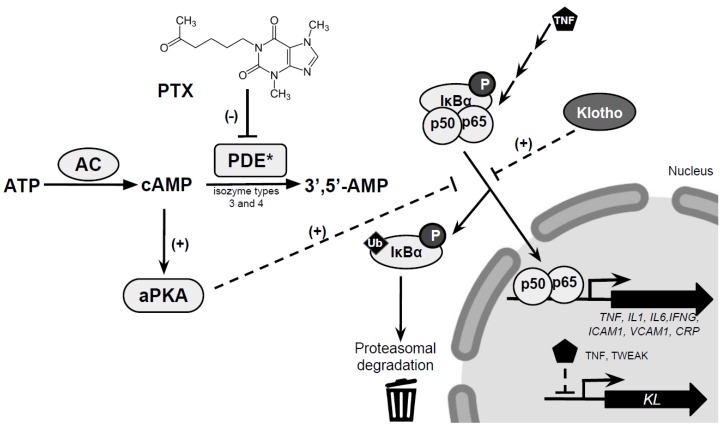Figure 1.
Suggested mechanisms of the anti-inflammatory effects of pentoxyfilline. Pentoxyfilline inhibits PDE activity increasing cAMP levels that activates PKA. Active PKA would inhibit ubiquitination that drives IκBα to 26S proteasome degradation and p50/p65 activation of the expression of citokynes and other genes. Decreased levels of TNF and TWEAK increases KL expression, whereas KL inhibits the production of pro-inflammatory cytokines and TNF-induced adhesion molecules. PTX; pentoxyfilline; PDE, phosphodiesterase; ATP, adenosine triphosphate; AC, adenylate cyclase; cAMP, cyclic adenosine-3,5-monophosphate; aPKA, active protein kinase A; IκBα, inhibitor of kappa B α; p50 (NF-κB1), nuclear factor NF-kappa-B p50 subunit (nuclear factor kappa-light-chain-enhancer of activated B cells 1); p65 (RelA), nuclear factor NF-kappa-B p65 subunit (V-Rel Avian Reticuloendotheliosis Viral Oncogene Homolog A); TNF, tumor necrosis factor α; IL, interleukin; IFNG, interferon gamma; ICAM1, intercellular adhesion molecule 1; VCAM1, vascular cell adhesion molecule 1; CRP, C reactive protein; TWEAK, TNF-related weak inducer of apoptosis; KL, Klotho.

